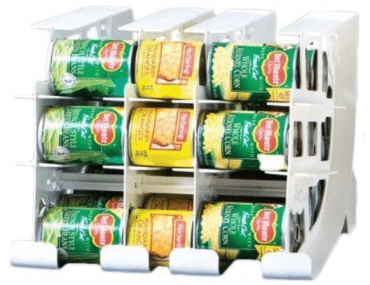Introduction
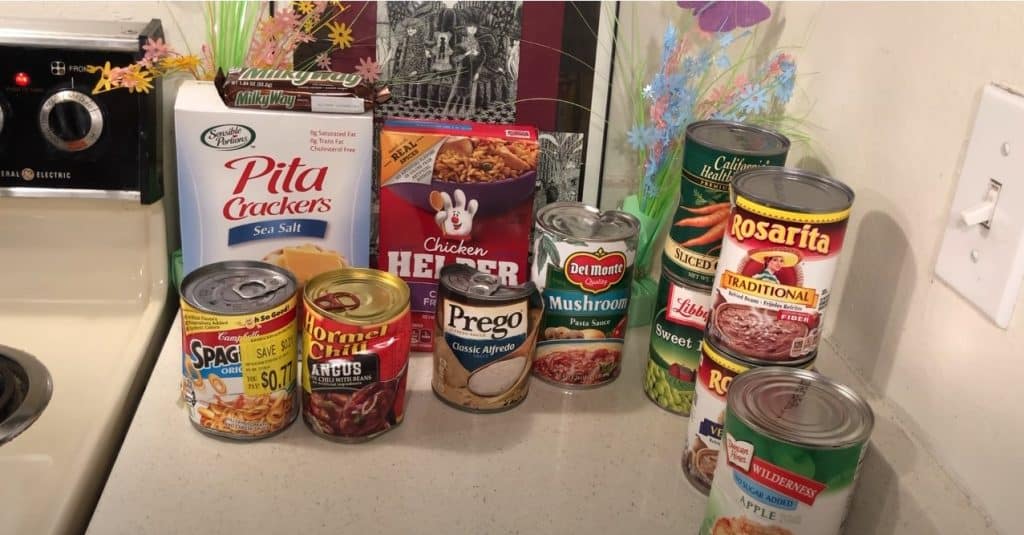
To the point
But here’s an issue most of us have come across in the past and still do – dented cans and damaged packages of other types (like flexible packaging). Maybe you did not notice that you were buying a dented can, or your food cans fell to the floor, which resulted in deep dents all over them. Or, when you last checked your food preservation storage, you noticed that there were some swollen cans or deeply dented ones. Are those cans still fine to keep? Is food from dented can still fit for human consumption? We will answer all these questions and even more in this guide.
Stick with us till the end of the guide or skip the main part and go right to the final chapter, where we will give a brief instruction on how to treat dented cans and tell if you can still eat food from damaged cans.
Different Types of Food Preservation
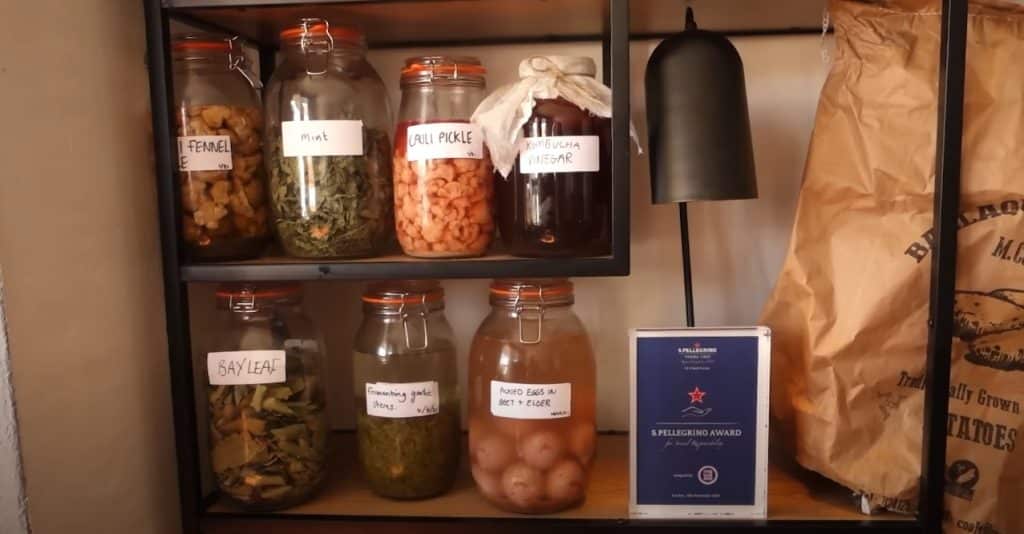
Long-term food preservation includes the following:
- Canning
- Drying
- Retort packaging
Each of the preservation techniques requires different storage conditions to make sure that food inside will stay safe, as well as different ways to tell if the package is still shelf-stable or it should be discarded.
Canned Food
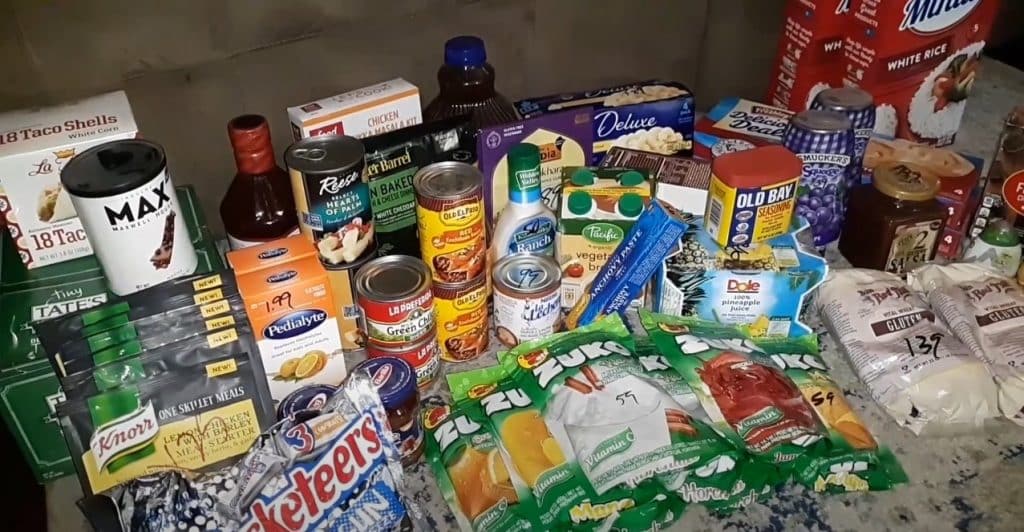
Below are the basic shelf-stability tips for canned foods.
NOTE:
- The information below is for cans in good shape only. Treating dented cans will be covered in the section below.
1. Canned ham (pork)
- You can store cans of canned ham or pork for at least two years. The longest-term storage for canned ham is five years.
- If you open a can of canned ham, you can only safely store it for four-five days in the fridge. Storing an opened can with canned ham at room temperature will spoil the product. Such a product can cause foodborne illness when consumed.
2. Low-acid canned foods
This type of canned goods includes canned meat/poultry, canned soups (as long as it’s not the soup made of tomatoes), canned stews, canned noodle/pasta, canned vegetables like canned beans, spinach, beets, potatoes, carrots, pumpkin, and corn.
- When unopened and intact, low-acid canned goods can be stored for five years.
- Opened cans of such goods can only be stored in a fridge for four days until they become unsafe to consume. Eating an improperly stored low-acid food product can lead to food poisoning, which you can treat with activated coal..
3. Hi-acid canned products
A high-acid food product is a food that is high in acid. This means that this type of food product has a very short shelf-life – the high amount of acid inside it makes for faster deterioration processes. Products with high acid content include tomatoes, apples (and products that are made using apples), canned fruit mixes, grapefruit (grapefruit juice as well), pineapple, plums, peaches, and pears. Juices made of lemons and limes, oranges, and tomatoes. Berries of all sorts are also high in acid. The world’s famous sauerkraut is a high-acid food product.
In fact, all products that are canned using vinegar are extremely high in acid, and thus they have a short shelf life.
- When in a factory-sealed container, high-acid canned goods are safe to store for up to 18 months (a year and a half).
- You must store an opened can of high-acid foods only in a refrigerator for seven days max. To tell if a high-acid product is spoiled, you should smell it. Another option is to taste a bit of the product. When spoiled, a high-acid product should have a strong acidic taste. This means that the product is unfit for consumption, and there is a risk of food poisoning due to the increased amount of hazardous bacteria. Your best option, in that case, is to toss it into the trash.
4. Home-canned foods
Home canning is quite popular these days. However, this process cannot match factory canning in terms of long shelf stability. Besides, when canning products at home, people can’t use metal cans for obvious reasons. That is why home-canned foods are mostly stored in tightly sealed glass jars. This requires keeping such products in the dark rooms because sunlight exposure can cause undesired chemical processes and bacteria growth. If that happens, lids can start bulging. Bulging is a sure indication that the product inside the container is not safe to consume.
- When unopened and properly stored, home-canned food has a shelf-life of twelve months only.
- If you open a home-canned product, you can only store it in a fridge for three or four days.
Dried food

1. Jerky
Jerky is a term used for dried (dehydrated) meat. To make jerky, one would need to slice meat (beef, for instance) into thin slices, add a lot of salt to prevent bacteria growth, and then dehydrate it. One of the key steps here is to cook meat before dehydrating since if you don’t cook meat (process it thermally), you won’t kill all the initial bacteria inside it, and meat will still be a breeding ground for more bacteria to grow even if you put a ton of salt onto it. Improperly dried meat, as you can guess, can become a cause of severe food poisoning.
There are two types of jerky: factory produced and DIY-made.
- Factory-produced jerky can be stored for 12 months.
- Home-made jerky can be stored for two months max. (You may store it longer, though. But to prevent the risk of foodborne illness hazards, it is advised to dispose of jerky that’s been stored for more than two months).
2. Dry sausage
- Store it safely for six weeks in a pantry (a cool and dark space).
- In a fridge, a dry sausage will stay safe to consume for 3 weeks.
- The best way to tell that you can no longer eat dry sausage is by smell or taste. As soon as the product no longer tastes or smells “good,” it is unfit for consumption, and there is a risk of food poisoning.
Retort packaging (or flexible packaging)

1. Meals-Ready-to-Eat
The shelflife of MRE’s fully depends on temperature.
- If you store these products at a temperature of 120 degrees Fahrenheit, their shelflife will be for one month only.
- At 90 degrees F, MRE’s are safe to store for 18 months.
- With the temperature conditions of 80 degrees F, MRE’s will be fit to consume for 30 months.
- At 70 degrees F and lower, you can store MRE’s for up to seven years.
- If you put MRE’s in a fridge, this will make their self-life even longer.
2. Dried eggs/dried egg whites
- Store dried eggs in a fridge at the recommended temperature of 50 °F and below – this will result in a shelf-life of twelve to fifteen months. When cans are opened, store in a fridge only for ten days max.
- Dried egg white can be stored at room temperature for as long as it takes. The main condition is to keep the product cool and dry.
3. Rice and pasta
- Store these products in tightly sealed containers at room temperature. Make sure they are stored in dry and dark places. If you follow these conditions, rice and pasta will stay perfectly fine on your shelves for two years and beyond.
- When cooked, these products must be kept in a fridge for three to four days until they change their smell and taste.
4. Various kinds of seafood (tuna, etc.)
- Store them for 18 months.
- When opened, these products will remain safe to consume for four days if kept in a fridge.
5. Meat/poultry
- Each product has particular manufacturer’s recommendations to follow.
- When opened, keep these products in a fridge for four days max.
Below, we will give you more information on the subject covering storage conditions for all three types of long-term preservation options, starting with canning since it is the most popular way of preserving foods.
Canned Foods Storage Tips

It was in 1795 when Chef Nicholas Appert was rewarded for the invention of what we know now as canning. What the Chef did was packing meat in glass jars, sealing those jars tightly, and then subjecting them to a thermal process commonly known as boiling. He did not know exactly back then that the whole procedure killed bacteria inside the meat, preventing them from growing and spoiling it. Chef Nicholas Appert had no clue that he was, obviously, the first person ever to sterilize food.
Fifteen years after, in 1810, the new food preservation technique reached the British isles. That’s where canning went metal – due to Peter Durance patenting canning with the use of metal containers. Later, a man called William Underwood moved overseas to Boston, where he built a canning factory. That took place in 1821, the year when commercial canning was introduced in the United States. And today, Underwood is the name of America’s oldest canning company.
What’s the secret behind canning?
There is no secret or magic, really. It’s plain science.
When you can food, you place it in an airtight container that you tightly seal, leaving no air inside. Such a vacuum sealing ensures that there is no oxygen within the container. And oxygen, as we all know, is what all the living things on the planet need to survive – hazardous microorganisms as well.
Although, it may seem a bit unfair to call those bacteria “hazardous” since they are only enemies to us – humans. Because when they reproduce in great amounts inside meat, fish, vegetables, or fruit, they spoil food, making it unfit for us to consume.
Eating spoiled food often results in severe cases of food poisoning with such extremely unpleasant symptoms as double vision, droopy eyelids, difficulty breathing, trouble swallowing, stomach pains, and diarrhea. Severe food poisoning affects the nervous system, and there is even the risk of a lethal outcome.
Boiling kills bacteria.
When food is canned, it undergoes thermal processing at 250 °F (or 121 if we convert it to Celcius). This way, all the potentially hazardous bacteria are killed. The food is tightly sealed to make sure that external bacteria will not get inside the container. That is why canned products stay safe to eat for a very long time – they are sterilized by high temperatures and kept tightly sealed in a vacuum.
But when you open a can of canned beans, canned pork, etc., using a can opener or a built-in pull tab, you break the anaerobic condition. With the can’s anaerobic condition broken, the food is once again unprotected against microorganisms that will do their job of spoiling it. That’s why you must keep opened cans in a fridge where low temperatures slow down the deterioration process.
And that is why it is so important to make sure that the cans you’re buying don’t have any deep dents on them. Because for your own safety, you should not eat from a dented can.
Can we store canned food products forever?
As advanced as modern-day canned food production gets, we can’t store food cans forever. All canned goods have specific storage conditions depending on the type of food inside. Some can be stored for two years. Some can be stored longer, say, five years and even more. In theory, you can have your collection of canned goods stored for decades. With a proper approach, it is quite possible. However, there are no guarantees that a decade-old canned food will still be safe to eat. So you will consume it at your own risk. However, the chances are that a decade-old can of beans or beef will be your only option if you find yourself in such a situation.
But hold on a second! If canned food is perfectly sterilized so there are no bacteria that would make it spoil and canned food is preserved in a tightly sealed airtight metal container, and you store it in strict accordance with all the necessary storage conditions, what in the world can affect the food inside? Well, there are a few factors.
1) Rust
Since cans are made of metal, they begin to rust over time. Of course, this process will not start right away. It will take time but in the end, should rust appear, it will only grow all over the metal surface of a can. And when metal rusts, it wears thin. When that happens to a food can, it will let air inside, thus breaking the anaerobic condition, eventually leading to bacteria growth and spoilage.
Rust is caused by moisture. So the best option to prevent your food cans from rust is to make sure that your food storage is dry.
2) Dents
Dents happen for various reasons. One of the most common scenarios is shipping accidents. Cans fall of the shelves during shipping. Sometimes a grocery store assistant may carelessly toss a can and damage it. Our advice is to check the cans before you buy them. Give them a thorough inspection. Look for dents. Especially pay attention to the dents on the top or side seam of a can. Such dents are the worst.
To know for sure that a dent that you is a problem, lay your finger into it. If you can lay your finger into a dent, that means that it’s deep and wide enough to qualify as a defect. Don’t buy such a can and lay it back on the shelf. Or better yet, address a shop assistant in a grocery store and tell them that you found a deeply dented can.
If you found out that you’ve bought a dented can. Do the same trick with a finger. If the dent is deep enough and it affects the seam of the can, take it back to the grocery store to receive compensation. If you found a can with a deep dent on one of your kitchen shelves, toss it into the trash. It is highly recommended not to eat from a dented can.
However, not all grocery stores have a strict policy regarding what kind of shape their food cans are. As a result, some may sell – and you have probably witnessed this at least once – cans that are slightly dented. From our personal experience, we can say that if there’s just a minor dent on a can, it’s fine to buy and store it. One small dent will not make a difference.
3) Corrosion
Can corrosion is pretty much like rust, with the main difference being that corrosion acts from the inside of canned goods.
This factor is most common for food products that are high in acid. When stored for a long enough time, acid in food like tomatoes will start to chemically react with the container. A few years later, a corroded container will affect changes towards the product’s taste and texture. It may even go as far as making the food extremely low in terms of its nutritiousness.
4) Temperature exposure
Another factor that will ruin your collection of canned foods is temperature. First of all, if cans are exposed to a high temperature of 100 degrees Fahrenheit and above for a long time, chemical processes will occur inside, resulting in food spoilage. By the way, there are specifically designed cans for hotter climates like tropical regions.
And there are also extremely low temperatures. If, for some reason, you freeze your canned goods, they will most likely swell because the food and liquid inside will expand. The bulging process may even lead to a complete container breach.
Bulging and swelling of cans are also indications that the food inside is contaminated with Clostridium botulinum (botulism). It is lethally dangerous to eat food that is contaminated with botulism. Botulism symptoms include muscle weakness, difficulty breathing, trouble swallowing, droopy eyelids, and double vision. Slurred speech is also one of the botulism symptoms.
If you found some frozen cans that are not swollen, let them thaw in a fridge. It is highly recommended not to thaw frozen cans at a temperature of 40 degrees Fahrenheit or higher. Instead, use the fridge, and then, when you open a thawed can and the food inside does not look or smell as expected – toss the can away.
How to Store Canned Goods Safely?
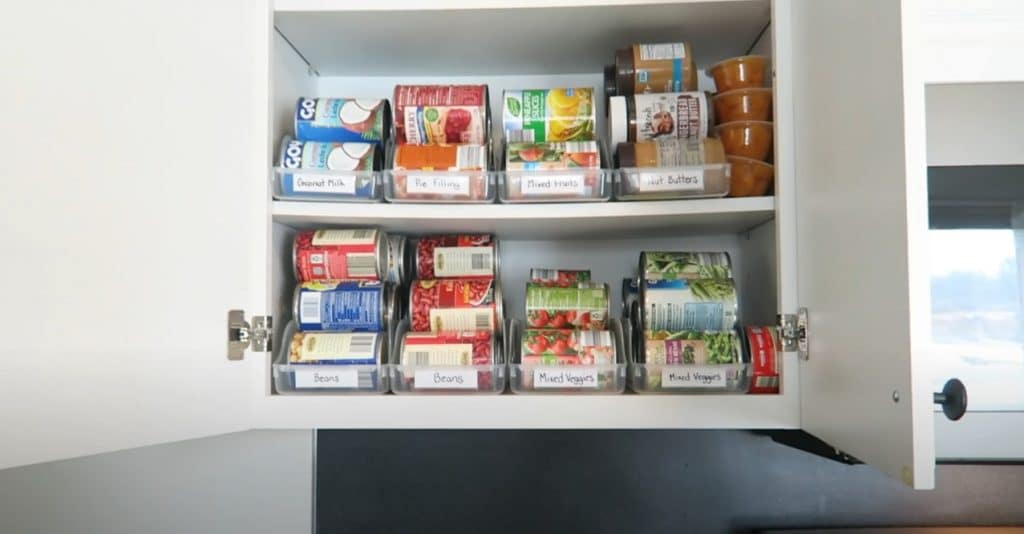
- Store canned goods in cool and dry places.
- Don’t store them above or next to the stove (high temperatures will ruin the food inside).
- Avoid damp spaces or places where temperature can go below zero; you can also try oxygen absorbers.
- The optimum temperature for storing canned goods is 85 degrees Fahrenheit (30 degrees Celcius).
- Avoid buying dented cans, as well as bulging cans, cans that leak or have rust on them.
- Inspect your pantry regularly to check if there are any rusted or dented cans. (If you store many cans, use a can organizer for the best convenience and safety.)
- If you find badly dented cans in your food storage – dispose of them. If a can has deep dents with sharp points and a damaged seam – it is unsafe, and food inside that can is most likely unfit for human consumption.
- If there’s just a minor dent on a can – it is still safe.
- Rotate your food storage – use canned foods that you bought a while ago. If you keep canned foods for too long, chances are they may go beyond their expiration date. (The Federal Law only obliges manufacturers to date only infant formula and several other baby products. Still, some food producers choose to put date information on their products. Cans also may have datings on them, such as “sell-by” or “use before.” Check with this information for more safety.)
Canned Foods and Urban Legends
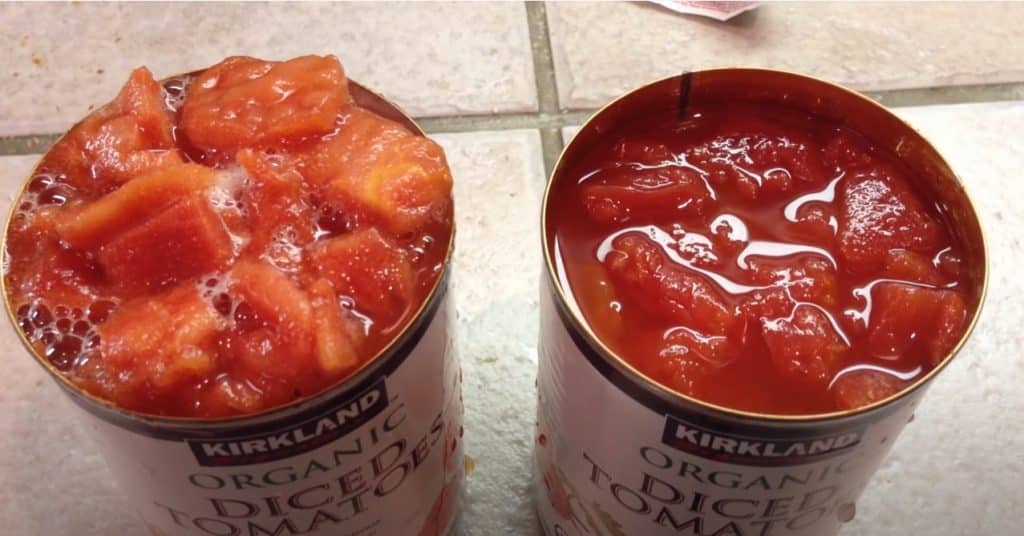
1) Cans contain lead and therefore are poisonous.
It’s a common fact that the US canned food industry has been using lead to make cans. But that was until the 1991’s decision to seize the practice. In 1995, lead was fully banned from using for manufacturing cans for food preservation. This restriction also applies to products from abroad. Today, cans are manufactured with the use of sheet steel with occasional tin coating. Other frequent materials include enamel or vinyl used for coating.
So when you’re buying a can of beans or ham, you may rest assured that there is not a single gram of lead in them. So they are perfectly safe to store food in them.
2) You must never eat food from a dented can. Ever!
This is half true. First of all, yes, you should not eat from a badly dented can. As we said above, badly dented cans are unsafe to store and eat from the – deep dents mean that there is probably air inside the can. And air means new bacteria and contamination. So you are best to stay away from deeply dented cans to avoid foodborne illness.
However, if there is just a minor dent on a can – a dent with no sharp points that do not affect the can’s seam – it is fine and is considered fit for storage. The food inside is fit for consumption.
3) When a can hisses as you open it – it’s a bad sign.
Wrong! Wrong! Wrong! Don’t get frightened if you hear a hissing noise coming out of a can as you open it (using a can opener or a built-in pull tab). This sound is just the sound of air coming into the can at high speed. The reason is that until you open a can, there is a vacuum inside – no air. And when you’ve broken the seal, the air gets sucked into the can. But!
There is always a “but,” isn’t it? The thing is if a hissing noise is too long and abnormally loud, and there is liquid spurting out of a can in large amounts as you open it, and the liquid smells bad, the FOOD INSIDE IS UNSAFE TO EAT – for your own safety, you should dispose of that can.
4) Crystals on the canned food indicate that it’s bad and unsafe to eat.
Some canned seafood may contain crystals – small fragments of a glass-like matter. Some say that these crystals are a sure indication that the food is unfit to eat. However, specialists say that forming of such crystals on canned fish or shellfish is perfectly normal. The substance itself is called struvite which is a colloquial term for magnesium ammonium phosphate.
Storage Tips For Dried Foods & Retort Packaging

Storing dried foods
People have been drying (or dehydrating food) for centuries. It’s the oldest way of preserving food supplies. Drying food products will take a lot of salt to draw water out of food and kill bacteria. Another key step is to cook meat or poultry before dehydrating. Because if there were no thermal processing of food, it would still be keeping potentially hazardous microorganisms that will start to reproduce and cause food poisoning.
Typically, dried food is stored at room temperature or a temperature slightly below zero. For instance, jerky (dried meat) is fine when stored at room temperature. Whereas dehydrated products like dry sausage are best stored in a fridge.
Storing retort packaging
Retort packaging (or flexible packaging) is a way to preserve food in aluminum foil or mylar bags. Usually, these are previously cooked meals like MRE’s or heavily processed products like dried egg whites, meat stew, ham, tuna, etc.
The main advantage of flexible packaging (or retort pouch) is that it’s lighter and more portable than metal cans.
Just like canned foods, products in flexible packaging are also stored in a vacuum. So when you open a retort pouch, you will let the air in, which will trigger the determination process. This means that, just like with canned foods, you will need to eat all the contents of a retort pouch or keep unused food in a fridge. Normally, retort pouch foods are stored at room temperatures.
The main downside of flexible packaging is that it gets damaged easier than metal cans. So when storing or transporting food in retort pouches, you should be twice as careful.
Taking Care of Dented Cans (A Quick Guide)

1) Where are the dents?
Look at the can closely and see where the dents are. If there are dents on the top, bottom, or seams, your best option is to avoid buying or opening the can. The aforementioned spots are the weakest.
If there are dents on the sides of a can, this means that the can is probably safe. However, you should inspect the dent or dents themselves. If they are too deep, maybe you should look for a better can. For your own safety.
With smaller dents that did not deform a can’s seal or its top/bottom parts, you are safe. As experts from the Culinary Institute of America say, minor dents pose no threat to food inside cans.
2) A rusty can?
If you come across a rusty can in your food storage, you should better take it off a shelf and get rid of it. Rust is one of the factors that ruin cans. A rusty can is no longer a safe container for food.
3) Is it bloated?
Stay away from bloated cans! At all times!
4) Does it feel solid?
Try pushing on the top and the bottom of a can. If feels solid and sturdy and there are no popping sounds as you push, the can is likely fine. If it does make popping sounds, that means that the can’s seal is broken, and there is air inside. Take this can off a shelf and throw it into the trash.
5) Is there liquid spurting out?
If you have a can with minor dents all over it, or there’s a deep dent in the side that seems to be of no threat, and you’re still unsure, try opening the can. Use a can opener or pull tab if the can has it. When you open the can, there is liquid spurting out, and it smells bad – toss the thing away. The food is spoiled, and you don’t want to eat it.
Conclusion

In other cases, a tiny dent or two will not create any problem at all. Cans get dented all the time for numerous reasons. And as long as you know exactly what to look at when buying, storing, or using canned products, dented cans won’t be of any threat to you.
Frequently Asked Questions (FAQ)
Why are dented cans bad?
Dented cans are cans with broken seals. That means they no longer fit as safe food containers because there is air inside them. If a can gets severely dented or there is a deep dent on either the top, the bottom, or the seal – it can no longer be stored or used. The food inside a dented can is probably contaminated and can cause serious digestive problems and foodborne illnesses. Botulism is another thing to be aware of when eating from dented cans. Botulism is a serious disease that attacks the nervous system causing several severe symptoms which can result in a lethal outcome.
Can stores sell dented cans?
Normally, stores should run inspections of their products and dispose of deeply dented cans. However, if there is a tiny dent, the can is deemed perfectly fine. According to experts from the Culinary Institute of America, minor dents located on the sides of a can pose no threat to the can’s contents.
Are bloated and dented canned foods safe to eat?
You must never eat from a bloated can. If a can is bloated, this means that there is air inside, which is not normal for a tightly sealed long-term food container. The same goes for a badly dented can. If there is a deep dent that affects the seal of the can, avoid eating from it.
Are rusted and dented cans acceptable?
If there is rust on a can, it should be regarded as unsafe because rust will eventually deform the container and let the air inside. As for dents, this depends on how deep dents are and where they are located. As experts of the Culinary Institute of America state, a minor dent will not compromise. The food safety inside the can. But if dents deformed the seal of a can, its top or bottom sides, such a can is no longer shelf-stable.

